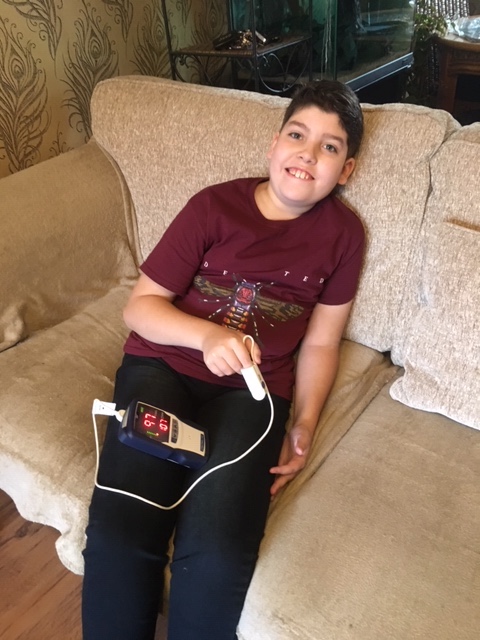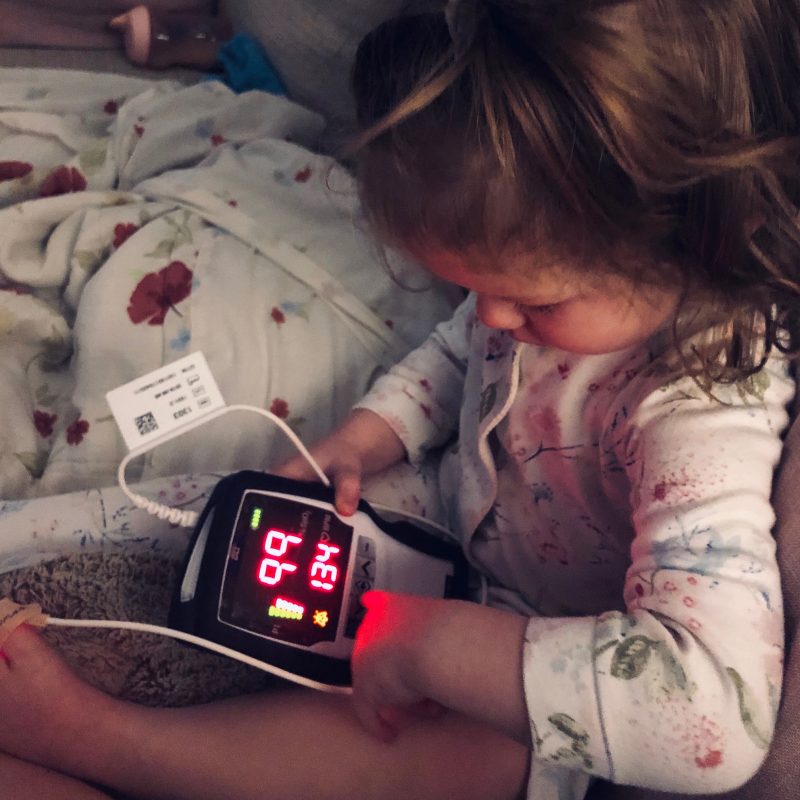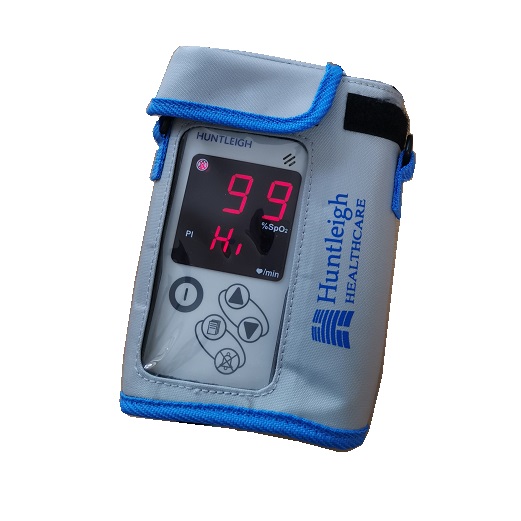Typically, when someone has a seizure, their heart rate increases and their oxygen levels drop. Pulse Oximeters monitor an individual’s heart rate and oxygen levels.
Pulse oximeters
Information about the Pulse Oximeter provided by the manufacturers:
If a child or adult with Dravet Syndrome is being monitored by a Pulse Oximeter Machine, the monitor will sound an alarm when it detects changes in heart rate and oxygen levels, thus informing parents/carers of a potential seizure, who will then be able to administer emergency treatment if necessary. The Pulse Oximeter is attached to the individual to be monitored by a sticky probe, generally on the toe.
Find out more about the Pulse Oximeter here.
Feedback from families on using the Pulse Oximeter:
Families have reported that the Pulse Oximeter can be tricky to use with very mobile patients or those with challenging behaviour, who may not tolerate the probe being attached via a wire.
Some have said that they pop the probe on once the child/adult is asleep so they are less aware of it being on. Families have also told us that they not only use their Pulse Oximeter through the night, but also during the day, or when a seizure or activity presents to monitor the oxygen levels and heart rate at the same time.
Important: the Pulse Oximeter Machine and other monitoring equipment provided by DSUK is in an assistive capacity only. The intention of provision is to assist in the management of an individual, and their condition and symptoms, to help minimise risk. Monitoring devices are assistive only and must not be used in substitute for observing clinical signs. DSUK can accept no liability for the accuracy of monitoring equipment nor for any consequences resulting from reliance on the device, or the actions of a patient, carer, medical practitioner or other individual resulting from use of the monitoring device.





